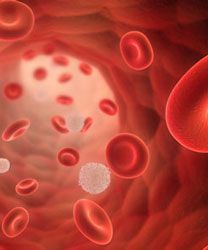Article
FDA Grants Venetoclax Breakthrough Designation for AML Subpopulation
Author(s):
Venetoclax has received an FDA breakthrough therapy designation for use in combination with low dose cytarabine in treatment-naïve elderly patients with acute myeloid leukemia who are ineligible for intensive chemotherapy.
CLL

Venetoclax (Venclexta) has received an FDA breakthrough therapy designation for use in combination with low dose cytarabine (LDAC) in treatment-naïve elderly patients with acute myeloid leukemia (AML) who are ineligible for intensive chemotherapy, according to Roche, which is codeveloping the BCL-2 inhibitor with AbbVie.
The breakthrough designation, which will expedite the development and review of the combination in this AML subgroup, is the fourth such designation for venetoclax. The FDA granted the status based on findings from the phase I/II M14-387 study that were recently presented in June at the 2017 European Hematology Association Annual Congress.
The open label study accrued patients aged ≥65 years with AML who were not ineligible for standard induction chemotherapy. Patients had not received prior treatment and had an ECOG performance status of 0 to 2.
Eighteen patients initially received oral venetoclax (600 mg to 800 mg) daily on days 1 to 28 and subcutaneous LDAC at 20 mg/m2 daily on days 1 to 10 of each 28-day cycle. The recommended phase II dose of venetoclax was determined to be 600 mg, which was administered in the expansion phase. To lower the risk of tumor lysis syndrome (TLS), all patients were hospitalized and administered prophylaxis prior to a dose ramp-up of venetoclax during cycle 1.
Overall, 61 patients, including 8 from the initial dosing, received the recommended phase II dose. The median patient age was 74 years and 70% of patients had an ECOG performance status of 1 or 2. Additionally, 28% of patients had a prior hypomethylating agent, 31% had adverse karyotypes, and 44% had secondary AML.
The overall response rate (ORR) was 61% (n = 37), which included a complete remission (CR) rate of 21%, a CR with incomplete blood count recovery rate of 33%, and a partial remission rate of 7%.
Activity with the venetoclax combination was observed across subgroups. The ORR was 70% in patients aged ≥75 years, 52% in patients with secondary AML, 47% in patients with adverse karyotypes, and 53% in patients who previously received a hypomethylating agent. Additionally, the researchers reported that survival was longer among patients who achieved a response.
The most common all-grade adverse events (AEs; ≥30% of patients; excluding cytopenias) were nausea (72%), hypokalemia (46%), diarrhea (44%), fatigue (43%), and decreased appetite (41%). The most frequently reported (≥10%) grade 3/4 AEs included febrile neutropenia (34%), hypokalemia (15%), hypophosphatemia (13%), and hypertension (10%).
Clinical TLS was not reported for any patients. There was 1 case of laboratory TLS, which was manageable. Mortality rates at 30 days and 60 days were 3% and 15%, respectively.
Venetoclax is approved by the FDA for the treatment of patients with chronic lymphocytic leukemia (CLL) who have a 17p deletion (del[17p]), following at least 1 prior therapy. The approval was primarily based on data from the phase II M13-982 study, in which venetoclax elicited responses in nearly 80% of patients with relapsed/refractory del(17p) CLL.
Wei AH, Strickland SA, Roboz GJ, et al. Updated safety and efficacy results of phase 1/2 study of venetoclax plus low-dose cytarabine in treatment-naïve acute myeloid leukemia patients aged ≥65 years and unfit for standard induction therapy. Presented at: 2017 EHA Congress; June 22-25, 2017; Madrid, Spain. S473.









